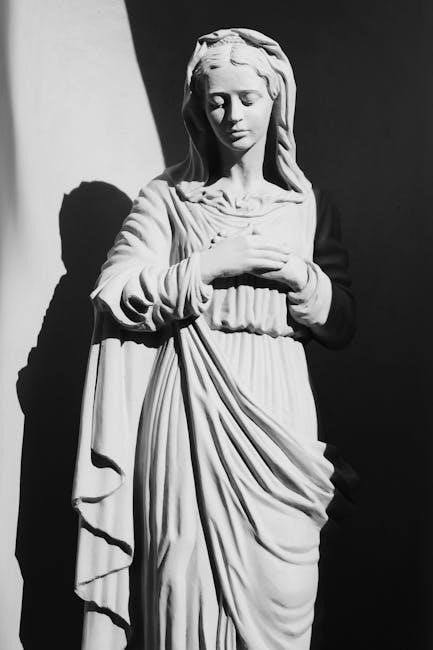divine liturgy in greek and english pdf
The Divine Liturgy, a cornerstone of Orthodox worship, combines Greek and English texts in bilingual resources, uniting diverse congregations. These resources, blessed by Archbishop Stylianos, facilitate participation and deepen understanding, ensuring accessibility for all.
Overview of the Divine Liturgy
The Divine Liturgy is a sacred Orthodox worship service, blending Greek and English texts in bilingual resources. It includes preparatory rites, the Liturgy of the Word, and the Eucharist. Bilingual materials, such as PDFs, combine the original Greek with English translations, ensuring accessibility for diverse congregations. These resources, often blessed by church leaders like Archbishop Stylianos, aim to preserve tradition while fostering universal understanding and participation in the liturgical experience.
Significance in Orthodox Worship
The Divine Liturgy is the cornerstone of Orthodox worship, blending prayer, scripture, and sacrament. Bilingual Greek and English resources ensure the liturgy remains accessible and meaningful across cultures. This practice honors the rich theological and cultural heritage of Orthodoxy while fostering unity among diverse congregations. The liturgy’s eucharistic focus emphasizes communal worship and spiritual nourishment, making it a vital expression of faith for Orthodox Christians worldwide.
Purpose of Bilingual Resources
Bilingual Greek and English resources for the Divine Liturgy aim to enhance accessibility and understanding for diverse congregations. These materials combine the original Greek text with accurate English translations, ensuring the theological richness and cultural heritage of the liturgy are preserved. They cater to both native Greek speakers and non-Greek worshippers, fostering unity and inclusivity. By providing clear and faithful translations, bilingual resources help participants engage deeply with the liturgy, enriching their spiritual experience and fostering a stronger connection to Orthodox traditions.

Historical Background
The Divine Liturgy traces its roots to ancient Orthodox traditions, with St. John Chrysostom’s contributions shaping its structure. Bilingual Greek and English texts emerged to meet modern congregational needs while preserving sacred traditions and ensuring accessibility for diverse worshippers.
Origins and Evolution
The Divine Liturgy’s origins trace back to early Christian worship, evolving through centuries of Orthodox tradition. Rooted in ancient practices, it incorporates elements from the early Church Fathers, blending Scripture, prayer, and sacrament. Over time, the liturgy adapted to linguistic and cultural shifts, with bilingual Greek and English texts emerging to serve diverse congregations. This evolution ensures the liturgy remains accessible while preserving its sacred traditions, fostering unity among worshippers across languages and generations.
St. John Chrysostom’s Contribution
St. John Chrysostom, a prominent Church Father, significantly shaped the Divine Liturgy with his theological insights and eloquent prayers. His liturgy, celebrated throughout the year, emphasizes the mystery of the Eucharist and the unity of worshippers. The Greek text, rendered in English, reflects his enduring influence, ensuring accessibility for diverse congregations while preserving the liturgy’s spiritual depth and tradition. His contributions remain central to Orthodox worship, bridging ancient practices with modern linguistic needs.
Development of Bilingual Texts
The development of bilingual Greek and English texts for the Divine Liturgy reflects a modern approach to preserving tradition while fostering inclusivity. These resources, often blessed by church authorities like Archbishop Stylianos, aim to unite diverse congregations. By combining the original Greek with accurate English translations, the texts ensure linguistic accessibility without compromising the liturgy’s spiritual essence. This dual-language format has become essential for maintaining the continuity of Orthodox worship practices while addressing the needs of multicultural communities, ensuring active participation and deeper understanding among all worshippers.
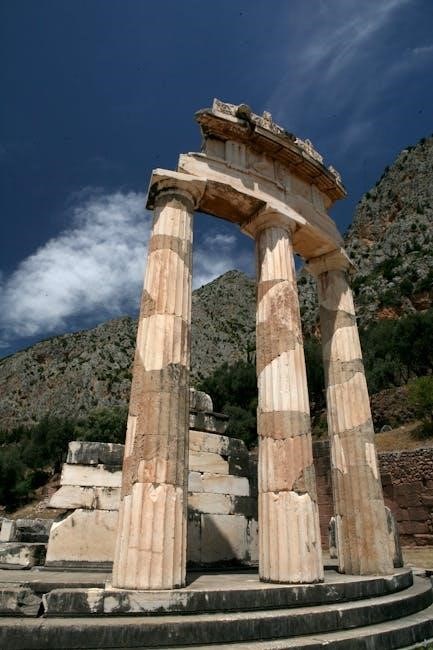
Structure of the Divine Liturgy
The Divine Liturgy is a sacred ritual divided into preparatory rites, Liturgy of the Word, Liturgy of the Eucharist, and concluding rites, guiding worshippers to communion.
Preparatory Rites
The preparatory rites of the Divine Liturgy set the tone for worship, including the bread blessing and Doxology. These rites prepare both the clergy and congregation spiritually. The bread blessing symbolizes the offering of the community, while the Doxology glorifies God. In bilingual resources, these rites are presented in Greek and English, ensuring accessibility. The rites also include the preparation of sacred elements, such as the prosphora, by the clergy in the prothesis. This phase emphasizes readiness for the sacred mysteries ahead, fostering a spirit of reverence and unity among worshippers.
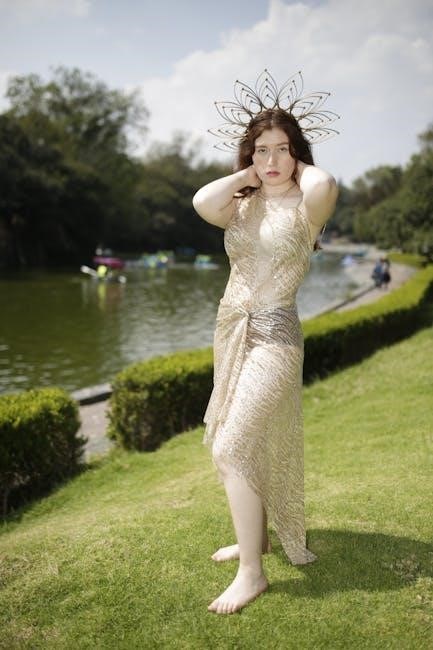
Liturgy of the Word
The Liturgy of the Word is a sacred dialogue between God and His people, centered on scripture and prayer. Bilingual resources provide both Greek and English texts, ensuring clarity for all worshippers. The Epistle and Gospel readings are prominently featured, often chanted or read in both languages. Hymns and litanies further enrich the experience, fostering active participation. This liturgical segment emphasizes spiritual nourishment through the Word of God, uniting the congregation in faith and prayer. Archbishop Stylianos’ blessings have made these bilingual texts accessible, bridging cultural and linguistic gaps for a deeper understanding of the divine message.
Liturgy of the Eucharist
The Liturgy of the Eucharist is the pinnacle of the Divine Liturgy, where bread and wine are consecrated into Christ’s Body and Blood. Bilingual resources in Greek and English guide worshippers through the sacred rites, including the Epiclesis and communion. The priest’s prayers, often in both languages, emphasize the mystery of the Eucharist. Congregants unite in receiving the sacrament, bridging linguistic divides. Archbishop Stylianos’ approved translations ensure authenticity and accessibility, fostering a deeper connection to the sacred tradition and the divine presence in the Eucharist.
Concluding Rites
The Concluding Rites bring the Divine Liturgy to a reverent close, reinforcing the spiritual renewal experienced. The final blessings, in both Greek and English, remind worshippers of their mission to live as children of God. The dismissal prayer, often recited in both languages, emphasizes gratitude and sends the faithful forth empowered. Bilingual resources, including Archbishop Stylianos’ translations, ensure all participants can reflect on the liturgy’s profound meaning, carrying its grace into daily life with unity and purpose, strengthened by shared worship.
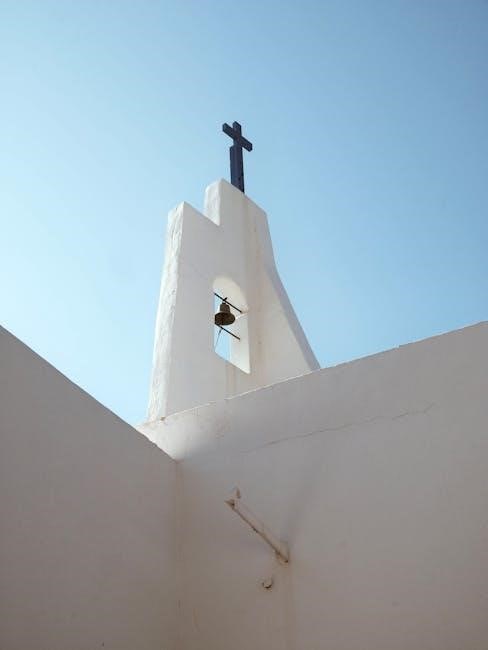
Significance of the Divine Liturgy
The Divine Liturgy is the pinnacle of Orthodox worship, uniting congregations in sacrament and prayer. Bilingual Greek and English texts foster unity, enhancing participation and spiritual connection, reflecting the Eucharistic mystery’s profound impact on communal life and faith.
Eucharistic Theology
The Divine Liturgy’s Eucharistic theology emphasizes the sacrament as the Church’s life source. Christ’s words, “Whoever eats My flesh and drinks My blood has eternal life,” resonate deeply. The liturgy transforms bread and wine into Christ’s Body and Blood, uniting believers with God. Bilingual Greek and English texts ensure accessibility, fostering a profound connection to the Eucharistic mystery. This sacred act reflects the unity of heaven and earth, embodying the Orthodox faith’s core belief in the real presence of Christ in the Eucharist.
Role of the Priest
The priest plays a central role in the Divine Liturgy, serving as a spiritual leader and intermediary between God and the congregation. They lead prayers, consecrate the Eucharist, and guide the faithful through the liturgical rites. Bilingual Greek and English resources enable priests to minister to diverse congregations, ensuring clarity and unity in worship. The priest’s chanting and recitation of sacred texts, often in both languages, foster participation and deepen the spiritual experience for all. Their role is vital in maintaining the liturgy’s integrity and theological richness.
Participation of the Laity
The laity’s active participation in the Divine Liturgy is vital, as it is the “work of the people” (leitos and ergon). Bilingual Greek and English resources empower the faithful to engage deeply, fostering a sense of unity and shared worship. Congregants can follow the liturgy in their preferred language, enhancing their spiritual connection. The availability of bilingual texts ensures accessibility, allowing the laity to chant, recite prayers, and fully immerse themselves in the liturgical experience, strengthening their role as integral members of the worshiping community.
Available Resources
Bilingual Greek and English PDFs include the Divine Liturgy of St. John Chrysostom and other liturgies, offering translations for comprehensive liturgical worship, published with ecclesiastical approval.
Greek and English PDFs
Bilingual PDFs of the Divine Liturgy include the Greek text alongside its English translation, ensuring accessibility for diverse congregations. Published with ecclesiastical approval, these resources contain the Liturgy of St. John Chrysostom, bread blessing services, and Doxology. The format often presents Greek and English on facing pages, maintaining musical consistency. These PDFs are widely used for worship, blending tradition with modern accessibility, and are recognized as official translations by Orthodox authorities, facilitating unity and understanding in liturgical practices across languages and cultures.
Online Repositories
Online repositories offer convenient access to bilingual Divine Liturgy resources, including Greek and English PDFs. These digital platforms host official translations blessed by Orthodox authorities, such as Archbishop Stylianos of Australia. They provide the Liturgy of St. John Chrysostom, Doxology, and bread blessing services, ensuring accessibility for global worship. Many repositories are maintained by churches or religious institutions, guaranteeing authenticity and accuracy. These resources are invaluable for personal devotion, communal worship, and educational purposes, bridging tradition with modern technology to reach a broader audience while preserving liturgical integrity and fostering spiritual growth.
Recommended Publications
Recommended publications include the official Divine Liturgy of St. John Chrysostom in Greek and English, endorsed by Orthodox authorities like Archbishop Stylianos of Australia. These texts, such as “The Divine Liturgy of St. John Chrysostom: Greek Text with English Rendering,” are widely recognized for their accuracy and fidelity to tradition. They are essential for both personal and communal worship, offering clear bilingual formats to enhance participation. Additional resources include liturgical guides and musical scores, ensuring comprehensive access to the liturgy’s rich spiritual and cultural heritage.
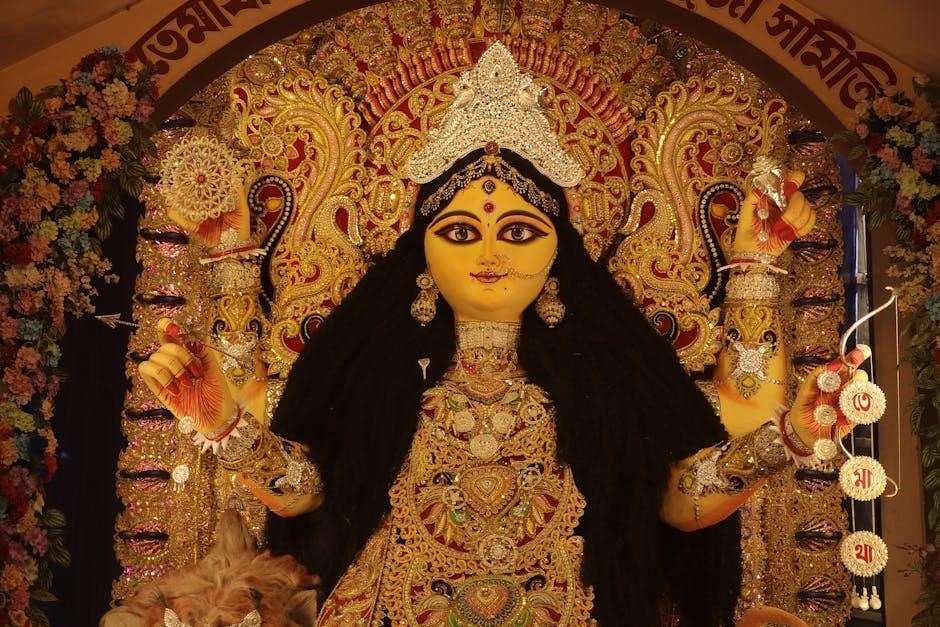
Linguistic and Cultural Aspects
The Divine Liturgy in Greek and English preserves sacred traditions while making worship accessible to diverse congregations, fostering unity and cultural understanding through bilingual practice.
Importance of Greek Text
The Greek text of the Divine Liturgy holds significant cultural and theological value, preserving the original language of Orthodox worship. It maintains liturgical authenticity and historical continuity, ensuring the integrity of sacred traditions. As the foundational language of the liturgy, Greek serves as a unifying element across Orthodox communities worldwide. Its inclusion in bilingual resources provides a reference for accurate translations and fosters a deeper connection to the Church’s heritage. This ensures that the spiritual and doctrinal richness of the liturgy remains accessible and intact for future generations;
English Translations and Usage
English translations of the Divine Liturgy provide accessibility for non-Greek speakers, ensuring broader participation in Orthodox worship. Published with the blessing of Archbishop Stylianos of Australia, these translations maintain the spiritual depth and theological accuracy of the original Greek text. They serve as a vital tool for congregations, offering a clear and understandable rendition of the liturgy. The English text is often presented alongside the Greek, facilitating bilingual worship and enhancing the spiritual experience for diverse congregations while preserving the liturgy’s sacred traditions and universal appeal.
Bilingual Worship Practices
Bilingual resources unite Greek and English texts, fostering unity and accessibility in worship. The Divine Liturgy in Greek and English PDFs present the original Greek alongside its English translation, maintaining authenticity while facilitating understanding. This practice balances tradition with modern needs, engaging multicultural congregations. By preserving the liturgy’s sacred language and offering a clear translation, bilingual worship ensures active participation and a deeper spiritual connection for all, regardless of linguistic background, while upholding the liturgy’s universal and timeless appeal.
Modern Usage and Digital Access
Digital resources enhance accessibility, offering Greek and English texts for bilingual worship. Online repositories and PDFs facilitate outreach, ensuring the Divine Liturgy remains relevant and engaging for modern congregations.
Impact of Digital Resources
Digital resources have revolutionized access to the Divine Liturgy, offering Greek and English texts in PDFs and online formats. These tools enhance engagement, enabling worshippers to follow services seamlessly. They also foster outreach, connecting global Orthodox communities and preserving traditions. Digital accessibility ensures that liturgical materials reach younger generations and diverse linguistic groups, promoting unity and participation. This modern approach bridges tradition with contemporary needs, enriching spiritual experiences while maintaining the integrity of the Divine Liturgy’s sacred rites and theological depth.

Accessibility and Outreach
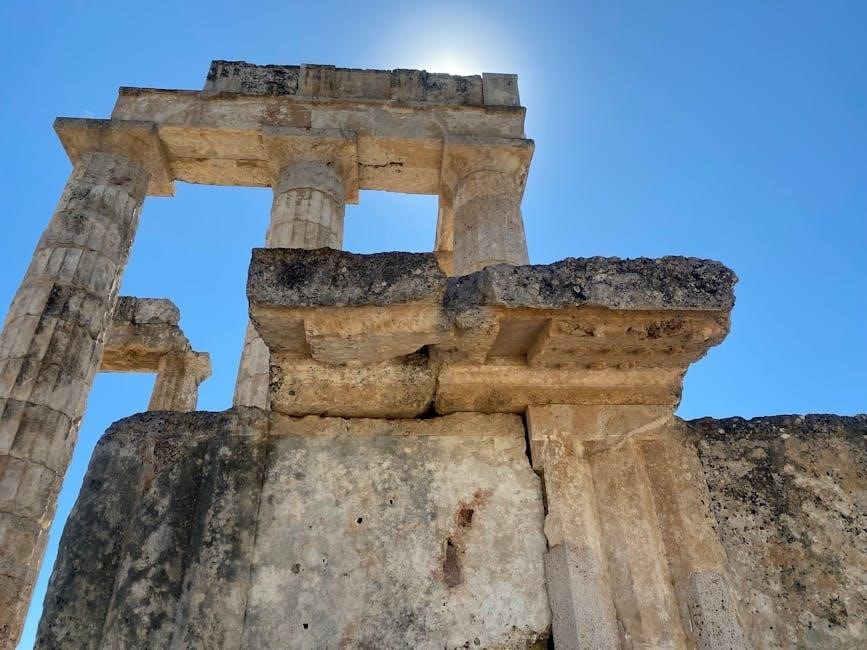
Digital resources like Greek and English PDFs of the Divine Liturgy have significantly enhanced accessibility for worshippers worldwide. These materials cater to diverse linguistic and cultural needs, ensuring that non-Greek speakers can fully engage. Online repositories and bilingual texts foster inclusivity, particularly for younger generations and those in multicultural communities. This outreach promotes unity, allowing faithful across different regions to participate meaningfully. By bridging language barriers, these resources strengthen spiritual connections and ensure the Liturgy’s universal appeal, making it a powerful tool for spreading Orthodox traditions globally.
Future of Bilingual Liturgical Materials
The future of bilingual liturgical materials looks promising, with digital advancements enabling wider dissemination. Greek and English PDFs, alongside online platforms, will continue to bridge cultural gaps, ensuring accessibility. As technology evolves, interactive and multimedia resources may emerge, enriching the worship experience. Collaboration between scholars and clergy will be key to maintaining accuracy and tradition while adapting to modern needs. This integration of innovation and tradition promises to strengthen the global Orthodox community, fostering unity and understanding for generations to come.
Challenges and Considerations
Balancing tradition with modernity, ensuring accurate translations, and maintaining the sacred essence of the liturgy are key challenges in creating bilingual resources for worship.
Maintaining Tradition
Maintaining the sacred traditions of the Divine Liturgy while adapting to modern needs is crucial. The Greek text remains central, preserving the liturgy’s historical and theological integrity. Bilingual resources ensure that the original meaning is not lost in translation, allowing worshippers to connect with the liturgy’s roots. Archbishop Stylianos’ endorsement highlights the importance of accuracy and faithfulness to tradition. By blending the timeless Greek text with accessible English, the liturgy’s essence is upheld, ensuring its relevance for future generations while honoring its ancient heritage.
Adapting to Modern Languages
Adapting the Divine Liturgy to modern languages while preserving its sacred character is a delicate balance. Bilingual resources, such as Greek and English PDFs, cater to diverse linguistic needs, ensuring accessibility for English-speaking congregants. These materials maintain the liturgy’s theological depth and cultural richness. Archbishop Stylianos’ endorsement reflects the Church’s commitment to making the liturgy understandable without compromising its tradition. This adaptation fosters unity among worshippers, bridging the gap between ancient rituals and contemporary understanding, while keeping the liturgy’s spiritual essence intact for future generations.
Ensuring Accuracy in Translation
Accuracy in translating the Divine Liturgy is paramount to preserve its theological integrity. Greek and English PDFs are meticulously crafted to align liturgical meaning with linguistic precision. Translators collaborate closely with clergy to ensure fidelity to the original Greek text. Archbishop Stylianos’ official endorsement guarantees the translation’s authenticity, reflecting the Church’s commitment to maintaining the liturgy’s sacred essence. This careful process ensures that the spiritual depth and doctrinal accuracy are upheld, making the bilingual resources reliable for worship and study, while honoring the tradition of Orthodox worship.
Benefits of Bilingual Resources
Bilingual Greek and English PDFs enhance understanding, fostering unity among diverse congregations. They bridge cultural gaps, ensuring accessibility and meaningful participation in the Divine Liturgy for all.
Enhanced Understanding
Bilingual resources of the Divine Liturgy in Greek and English foster deeper comprehension, bridging linguistic and cultural gaps. Parallel texts allow worshippers to follow the service seamlessly, ensuring clarity and connection to the sacred rites; English translations, blessed by Archbishop Stylianos, make the liturgy accessible to diverse congregations, enriching their spiritual experience. This accessibility encourages active participation, enabling worshippers to engage fully with the liturgical traditions and theological richness of the Orthodox faith.

Unity in Worship
Bilingual Divine Liturgy resources in Greek and English promote unity by allowing diverse congregations to worship together seamlessly. The parallel texts ensure that both languages are honored, bridging cultural divides and fostering a sense of togetherness. This inclusive approach reflects the Orthodox Church’s commitment to maintaining tradition while embracing its universal mission. By uniting worshippers in shared liturgical experiences, bilingual resources strengthen communal worship and reinforce the Church’s global unity.
Facilitating Participation
Bilingual Divine Liturgy resources in Greek and English enhance accessibility, enabling worshippers to fully engage with the service. By providing both languages side by side, these texts cater to diverse congregations, ensuring clarity and ease of participation. English-speaking faithful can follow the liturgy seamlessly, while Greek-speaking members maintain their tradition. This dual approach fosters inclusivity, allowing everyone to actively partake in worship. The resources serve as a bridge, supporting both linguistic and cultural needs within the Orthodox community.
The Divine Liturgy in Greek and English PDFs serves as a vital resource, preserving tradition while fostering unity. These bilingual texts ensure accessibility and deepen spiritual engagement.
The Divine Liturgy, available in Greek and English PDFs, holds profound significance in Orthodox worship, blending tradition with accessibility. By uniting diverse linguistic and cultural backgrounds, these bilingual resources ensure active participation and spiritual unity. They preserve the richness of the Greek text while making the liturgy understandable to English-speaking faithful, fostering a deeper connection to the sacred rites. This balance between tradition and modern accessibility underscores the liturgy’s enduring relevance in contemporary worship.
Such resources are indispensable for maintaining the integrity of Orthodox traditions while embracing the needs of a global congregation, ensuring the liturgy remains a vibrant, unifying force in the faith community.
Impact of Bilingual Availability
The availability of the Divine Liturgy in both Greek and English has significantly enhanced worship experiences, bridging linguistic and cultural gaps. It allows congregants to engage deeply, regardless of their primary language, fostering unity and understanding. This bilingual approach not only preserves the liturgy’s traditional essence but also makes it accessible to a broader, modern audience. Consequently, it strengthens the Orthodox community’s global outreach and evangelism efforts, ensuring the liturgy remains a vital, unifying force for spiritual growth and connection.
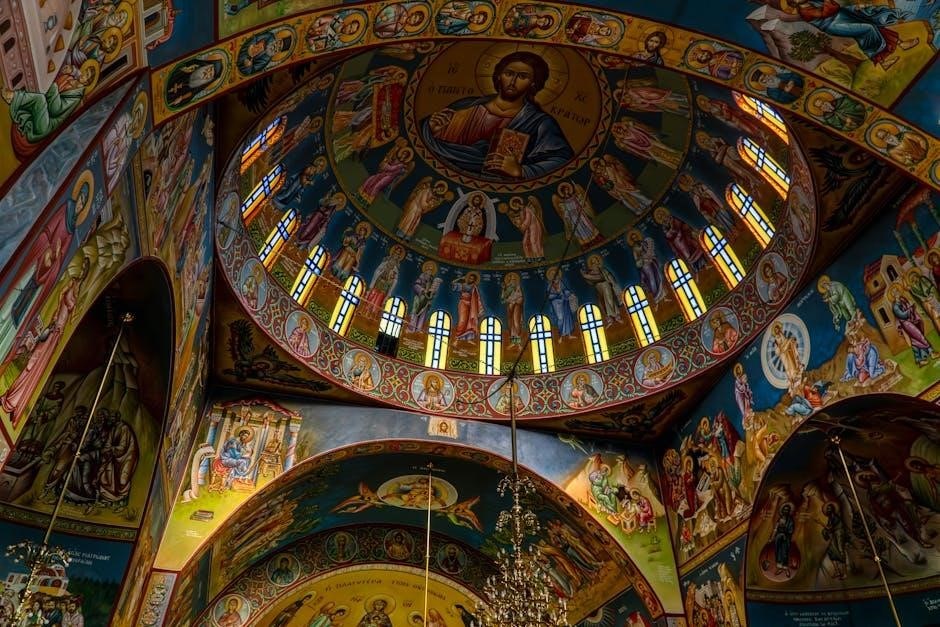
Further Reading and Resources
- Explore Orthodox Eastern Church publications for detailed liturgical texts.
- Refer to resources blessed by Archbishop Stylianos of Australia for authentic translations.
- Discover “The Divine Liturgy of St. John Chrysostom” in Greek and English for comprehensive understanding.
Recommended Websites
For authentic resources on the Divine Liturgy in Greek and English, visit the Greek Orthodox Archdiocese of America website. Explore OrthodoxWiki for detailed liturgical explanations and bilingual texts. The St. Nectarios Press offers downloadable PDFs of the Divine Liturgy, including the Greek and English versions. Additionally, the Order of St. Andrew provides resources on liturgical practices and translations.
Suggested Literature
For deeper exploration, consider The Divine Liturgy of St. John Chrysostom by Archbishop Stylianos, offering insights into the liturgy’s theology. The Greek and English Liturgy Book by St. Nectarios Press is a comprehensive guide. Liturgy and Life by Holy Cross Orthodox Press explores the liturgy’s spiritual dimensions. These works provide historical context, theological depth, and practical guidance, enriching your understanding of the Divine Liturgy in both languages.
